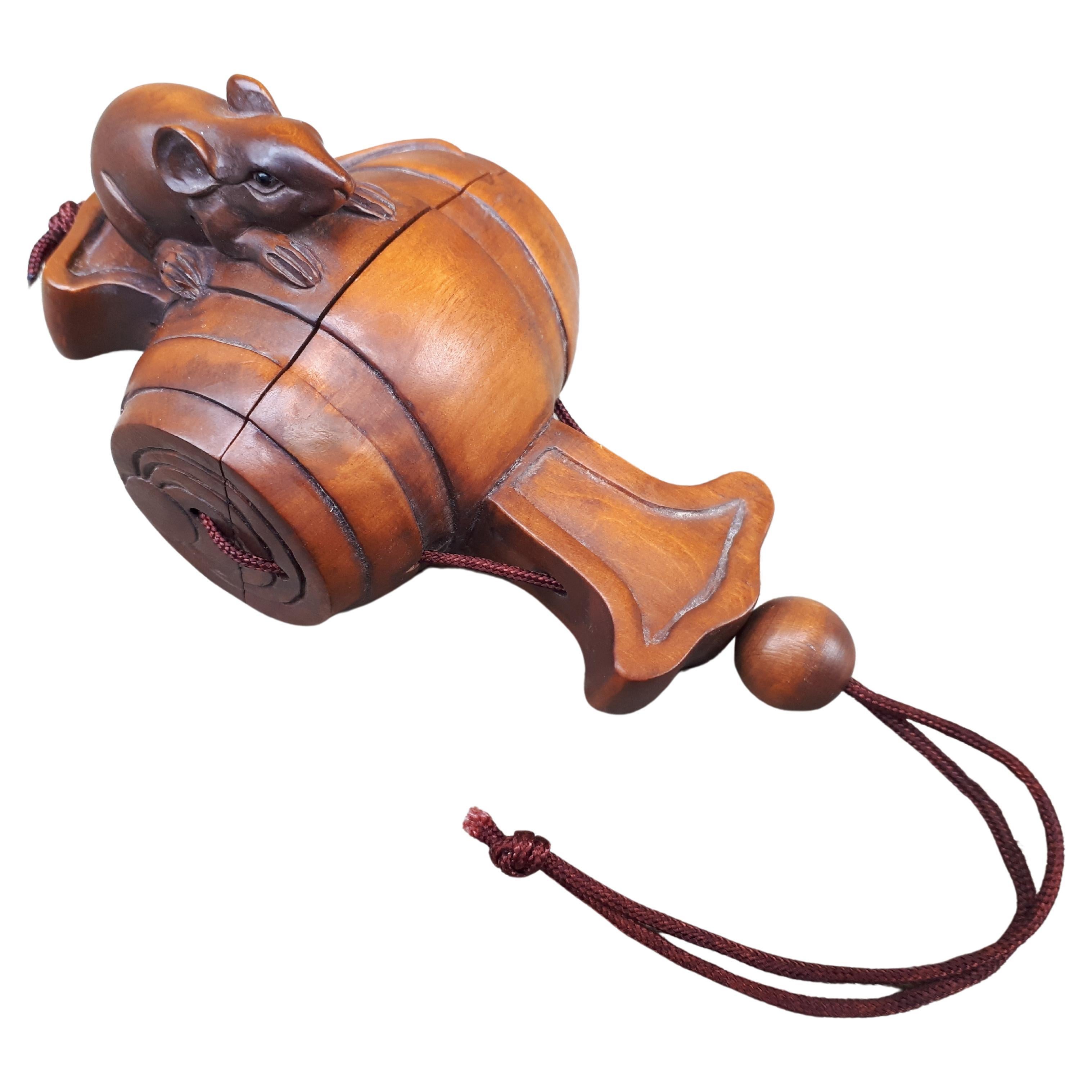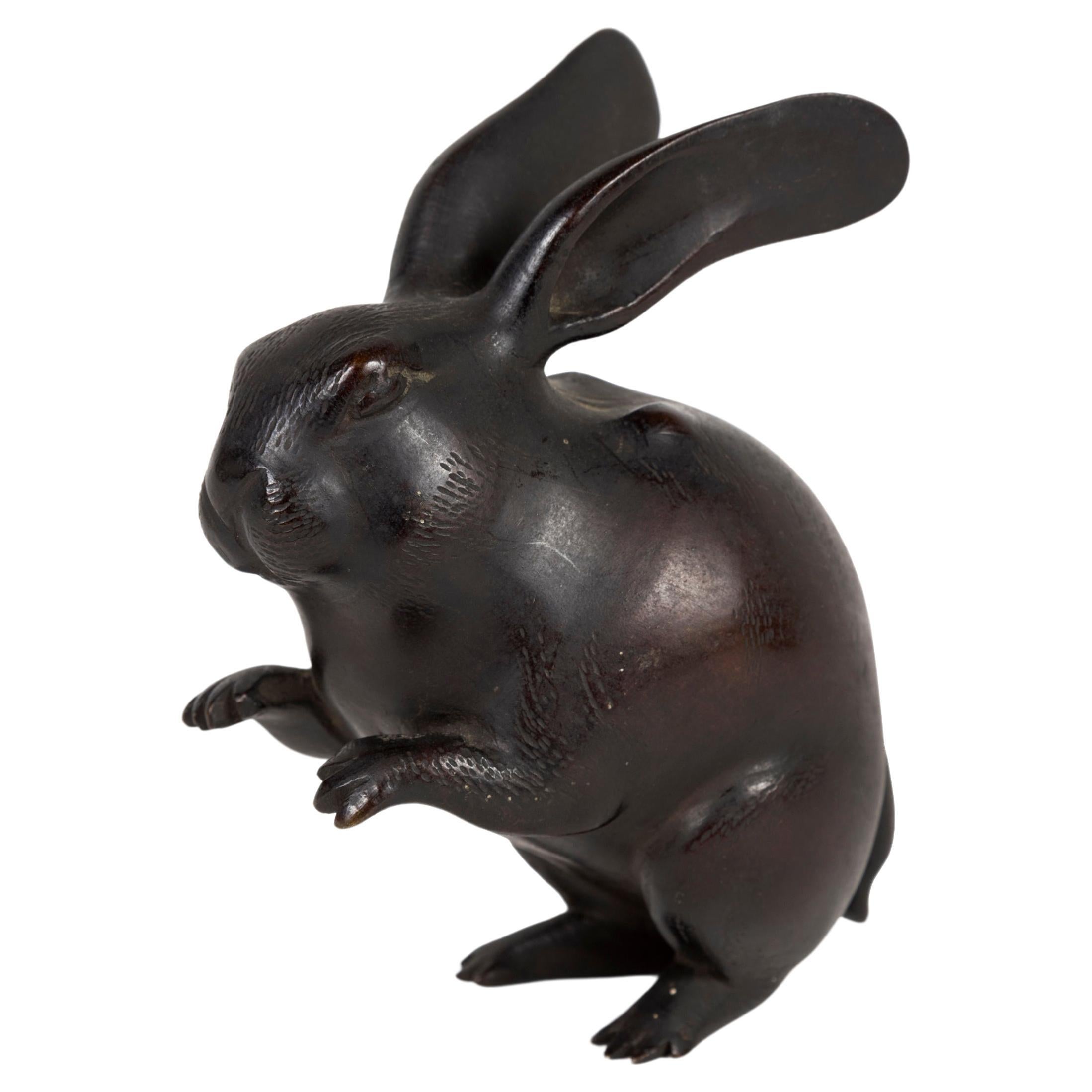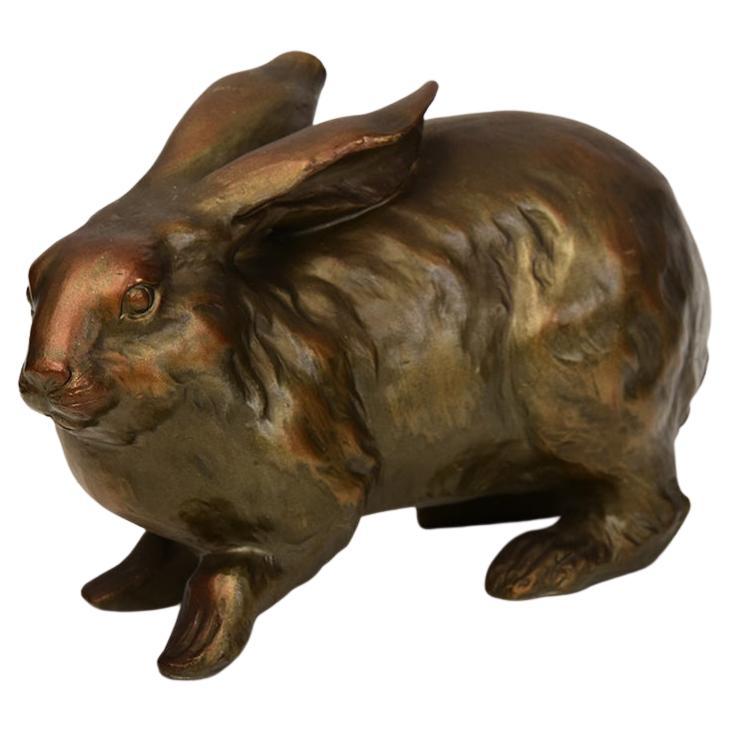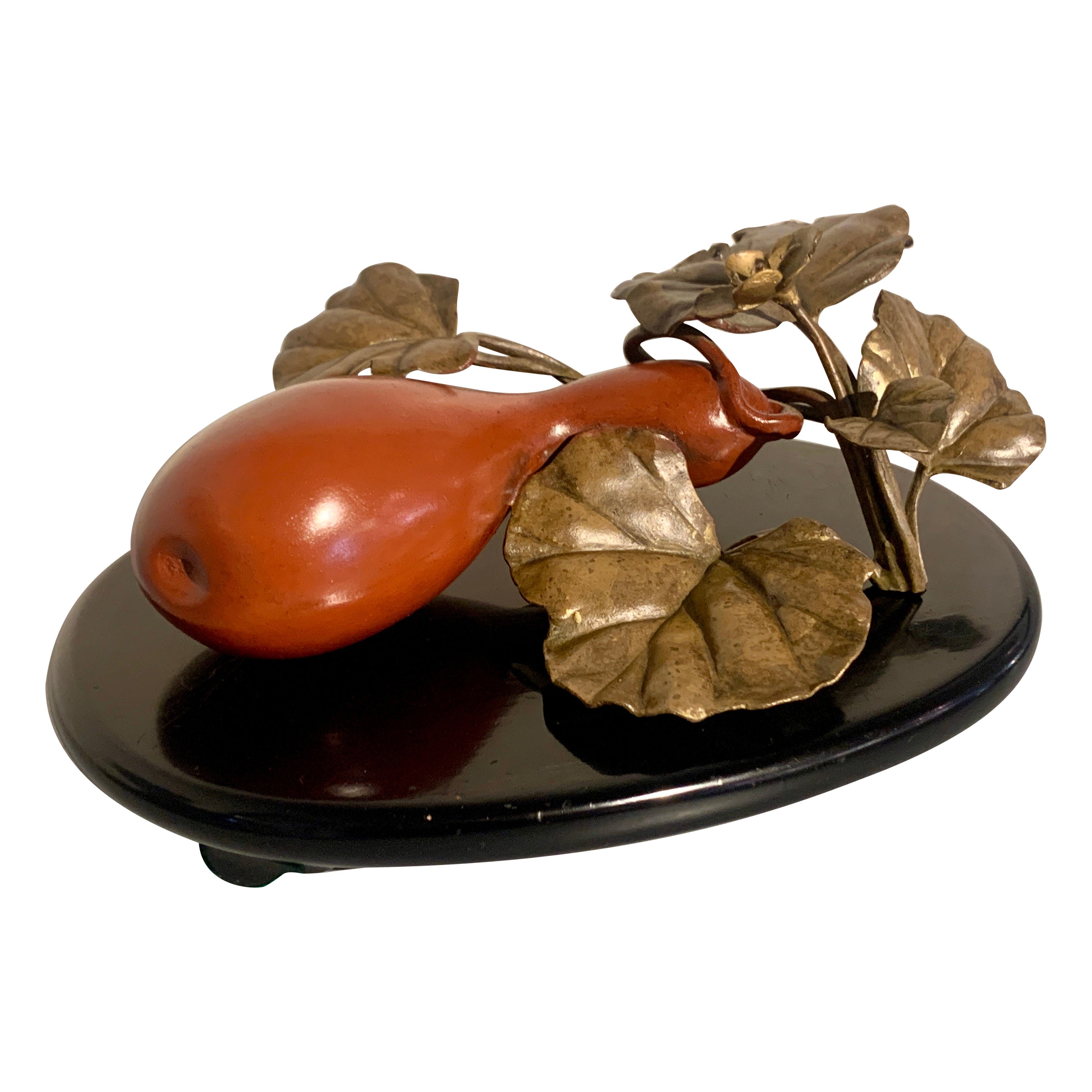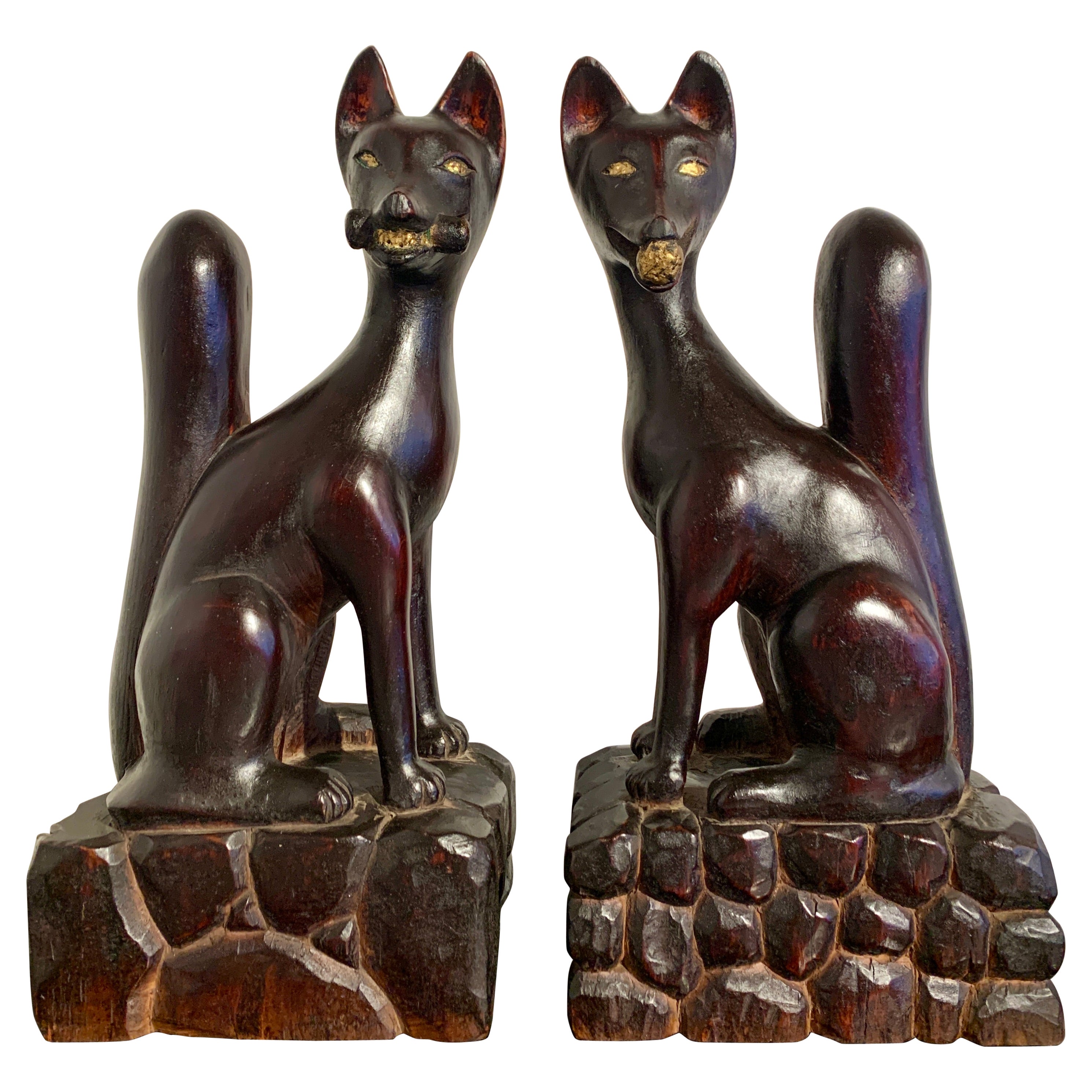Items Similar to Japanese round shaped rabbits bronze pair Hiroharu Hiramatsu Showa era
Want more images or videos?
Request additional images or videos from the seller
1 of 7
Japanese round shaped rabbits bronze pair Hiroharu Hiramatsu Showa era
About the Item
Pair of bronze rabbits running, their legs forming a round shape.
Made by Hiroharu Hiramatsu (1896 Hyôgo prefecture – 1971, Fukushima,平松宏春). Specialized in metal art, he is a councilor of the Japan Fine Arts Exhibition. He studied with Katsura Mitsuharu (1871-1962), one of the great metallurgists of the modern era. Selected for the first time at the Japan Fine Arts Exhibition in 1934, he has been presenting his work every year, and since then he has been presenting as one of the leading artists in the craft division after the war. On several occasions, he has served as a judge of the Japan Fine Arts Exhibition and the Osaka Prefectural and City Exhibition. Some of his works has been purchased by the Imperial Household Agency and was a gift to Their Majesties Emperor Hirohito and Empress Nagako, Crown Prince Akihito and Prince Masahito of Hitachi. Hiroharu is also a member of the Association of Contemporary Craft Artists and a professor at Osaka University of Art. He was awarded the Osaka Prefectural Art Prize and he was made an honorary citizen of Ikeda city.
Signed on the back of the large rabbit « made by Hiroharu » (宏春作).
Hiroharu Hiramatsu (1896-1971) – Japon, Osaka prefecture – Showa era (1926-1989)
Large rabbit : height 4.7 in (12 cm) – width 2.3 in (6 cm) – depth 5.9 in (15 cm)
Small rabbit: height 2 in (5.5 cm) – width 1.2 in (3.3 cm) – depth: 2.4 in (6.5 cm)
- Creator:Hiroharu Hiramatsu (Artist)
- Dimensions:Height: 4.73 in (12 cm)Width: 2.37 in (6 cm)Depth: 2.33 in (5.9 cm)
- Style:Japonisme (Of the Period)
- Materials and Techniques:
- Place of Origin:
- Period:
- Date of Manufacture:circa 1935
- Condition:Wear consistent with age and use.
- Seller Location:PARIS, FR
- Reference Number:
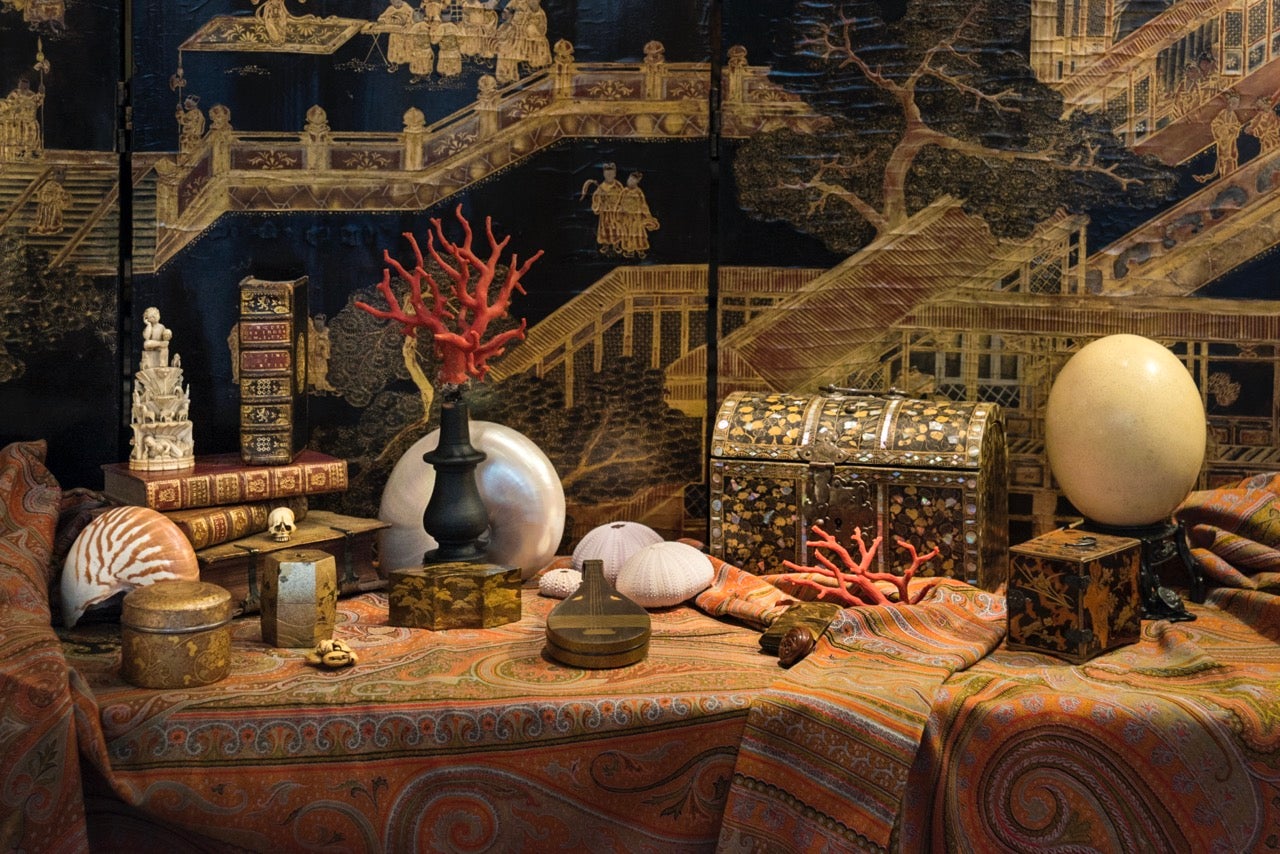
About the Seller
No Reviews Yet
Vetted Seller
These experienced sellers undergo a comprehensive evaluation by our team of in-house experts.
Established in 2013
1stDibs seller since 2023
- ShippingRetrieving quote...Ships From: PARIS, France
- Return PolicyA return for this item may be initiated within 7 days of delivery.
More From This SellerView All
- Japanese small round bronze hare Meiji eraLocated in PARIS, FRSmall round hare in bronze with dark brown patina, standing on its four legs. In Japanese, the hare and the rabbit are referred to by a single word: usagi. The animal is one of the t...Category
Antique Late 19th Century Japanese Japonisme Sculptures and Carvings
MaterialsBronze
- Japanese large round bronze hare Meiji eraLocated in PARIS, FRRound hare in bronze with a dark brown patina, standing on two legs. In Japanese, the hare and the rabbit are referred to by a single word: usagi. The animal is one of the twelve an...Category
Early 20th Century Japanese Japonisme Sculptures and Carvings
MaterialsBronze
- Japanese Meiji era chestnut netsukeLocated in PARIS, FRWooden netsuke featuring a group of three chestnuts. One of them reveals a tiny hole and the head of a small worm in bone inlay, offering a very naturalistic representation. Chestnu...Category
Antique Late 19th Century Japanese Japonisme Sculptures and Carvings
MaterialsBoxwood
- Japanese bronze okimono turtle (sculpture)Located in PARIS, FROkimono sculpture of a bronze turtle, tail retractable. In Japan, the turtle (kame) is a symbol of longevity and an auspicious animal. It is believed to bring ten thousand years of h...Category
Antique Late 19th Century Japanese Japonisme Sculptures and Carvings
MaterialsBronze
- Japanese bronze okimono Jizai Praying Mantis (articulated sculpture)Located in PARIS, FRJizai okimono sculpture of an articulated bronze praying mantis. Insects (mushi) play an important role in Japanese culture. Insect hunting is a popular pastime, especially among chi...Category
Antique Mid-19th Century Japanese Japonisme Sculptures and Carvings
MaterialsBronze
- Japanese Peanuts NetsukeLocated in PARIS, FRWood netsuke of three peanuts. A naturalistic grouping, dark stained. An ivory plug may bear a highly stylised signature. Provenance : Arlette Katchen, Paris. Japan, 20th centu...Category
Mid-20th Century Japanese Sculptures and Carvings
MaterialsWood
You May Also Like
- Wooden inro, Japan Showa EraLocated in Saverne, Grand EstInro representing a mouse on a barrel. Very detailed sculpture, quality object. Japan 20th century.Category
20th Century Japanese Sculptures and Carvings
MaterialsWood
- 20th Century, Showa, Japanese Bronze Animal Rabbit Hollow SculptureLocated in Sampantawong, THJapanese bronze animal rabbit hollow sculpture. Age: Japan, Showa Period, 20th Century Size: Height 18.4 C.M. / Width 13 C.M. / Length 30 C...Category
20th Century Japanese Antiquities
MaterialsBronze
- Japanese Painted Bronze Okimono of a Gourd by Toyo, Showa Era, 1960s, JapanBy ToyoLocated in Austin, TXA charming Japanese decorative bronze sculpture, okimono, of a gourd, hyotan, by Toyo Japan, Showa Era, circa 1960s, Japan. The realistic okimono, fashio...Category
Vintage 1960s Japanese Showa Sculptures and Carvings
MaterialsBronze
- Pair Japanese Carved and Lacquered Inari Foxes, Showa Era, Dated 1951, JapanLocated in Austin, TXA delightful and mischievous pair of Japanese carved and lacquered wood Inari foxes, kitsune, dated Showa year twenty six, corresponding to 1951, Japan. T...Category
Vintage 1950s Japanese Showa Sculptures and Carvings
MaterialsElm
- Japanese Kutani Porcelain Beauty, Bijin, or Geisha, Showa Era, 1930's, JapanLocated in Austin, TXA delightful Japanese Kutani enameled porcelain figure of a bijin or geisha, early Showa Era, circa 1930's, Japan. The elegant figure of a beautiful woman, called a bijin, or perhap...Category
Vintage 1930s Sculptures and Carvings
MaterialsPorcelain
- Japanese Kutani Porcelain Figure of a Geisha or Bijin, Showa Era, 1930's, JapanLocated in Austin, TXA lovely Kutani porcelain model of a beautiful woman, bijin, or perhaps a geisha, Showa era, circa 1930's, Japan. A charming and delightful Japanese Kutani enameled porcelain figure of a bijin or geisha, early Showa Era, circa 1930's, Japan. The elegant figure of a beautiful woman, called a bijin, or perhaps a geisha, is portrayed dressed in full kimono and holding a closed folding fan in one hand. Her kimono of a rich and deep blue hue, with images of plump pomegranates in gilt. Her wide obi of a striking red color, and patterned with branches of pink blossoms. One foot, clad in a white tabi...Category
Vintage 1930s Japanese Showa Sculptures and Carvings
MaterialsPorcelain
Recently Viewed
View AllMore Ways To Browse
Japanese Showa Bronze
Asian Emperors And Empress
Resting Buddha Sculpture
Small Carved Buddha
Rabbit And Moon
Abhaya Asian Antiques
Buddha Relief
Samurai Sword Stand
Indonesian Bali Teak Wood Vintage Furniture
Antique Carved Japanese Warrior
Indonesian Stone Carving
Buddhist Prayer Box
Marble Elephant Midcentury Statues
Finely Carved Japanese Okimono
Jade Guanyin Statue
Myanmar Pottery
Wood Carving Elephant
Wood Carving Salmon
